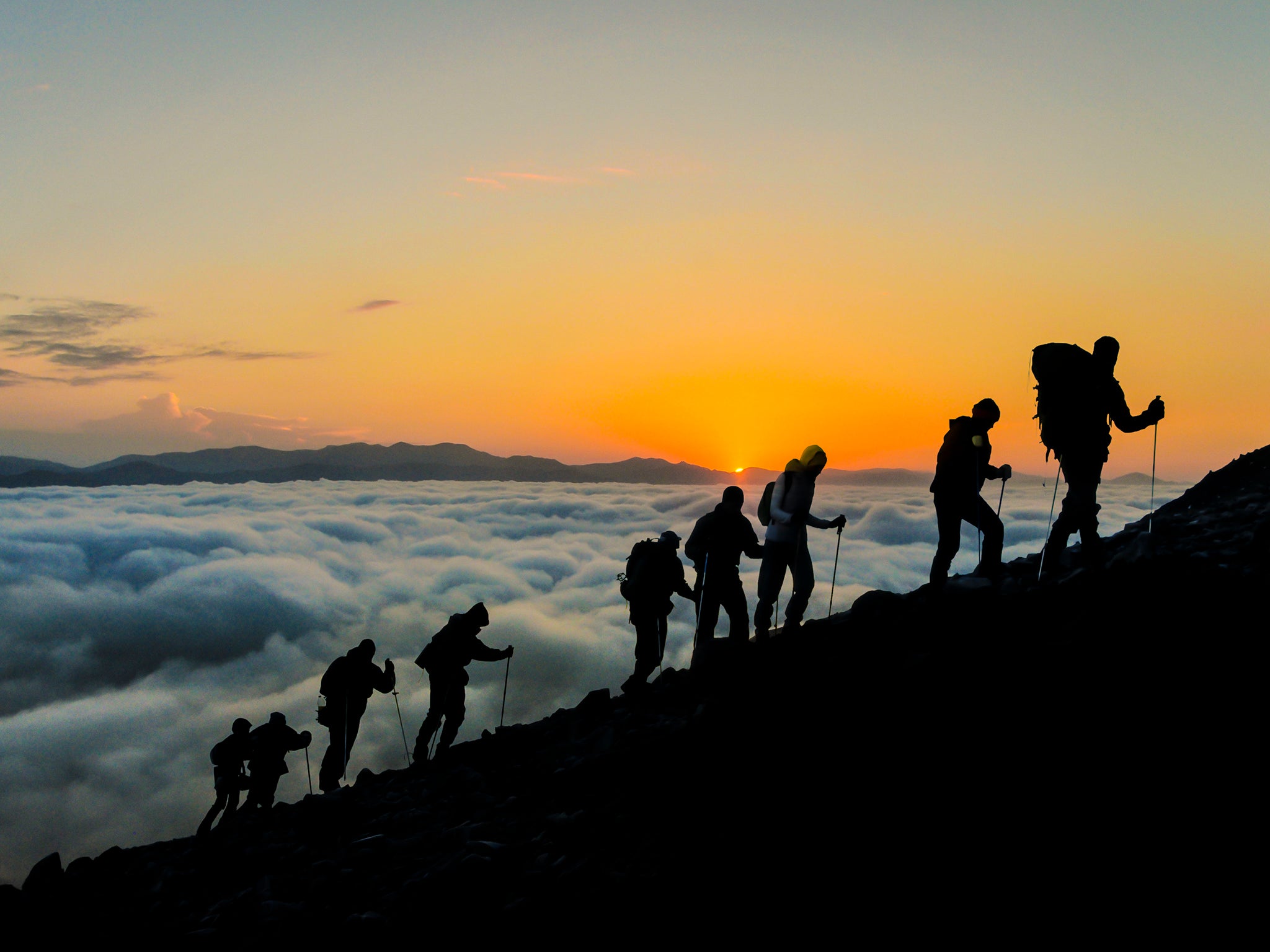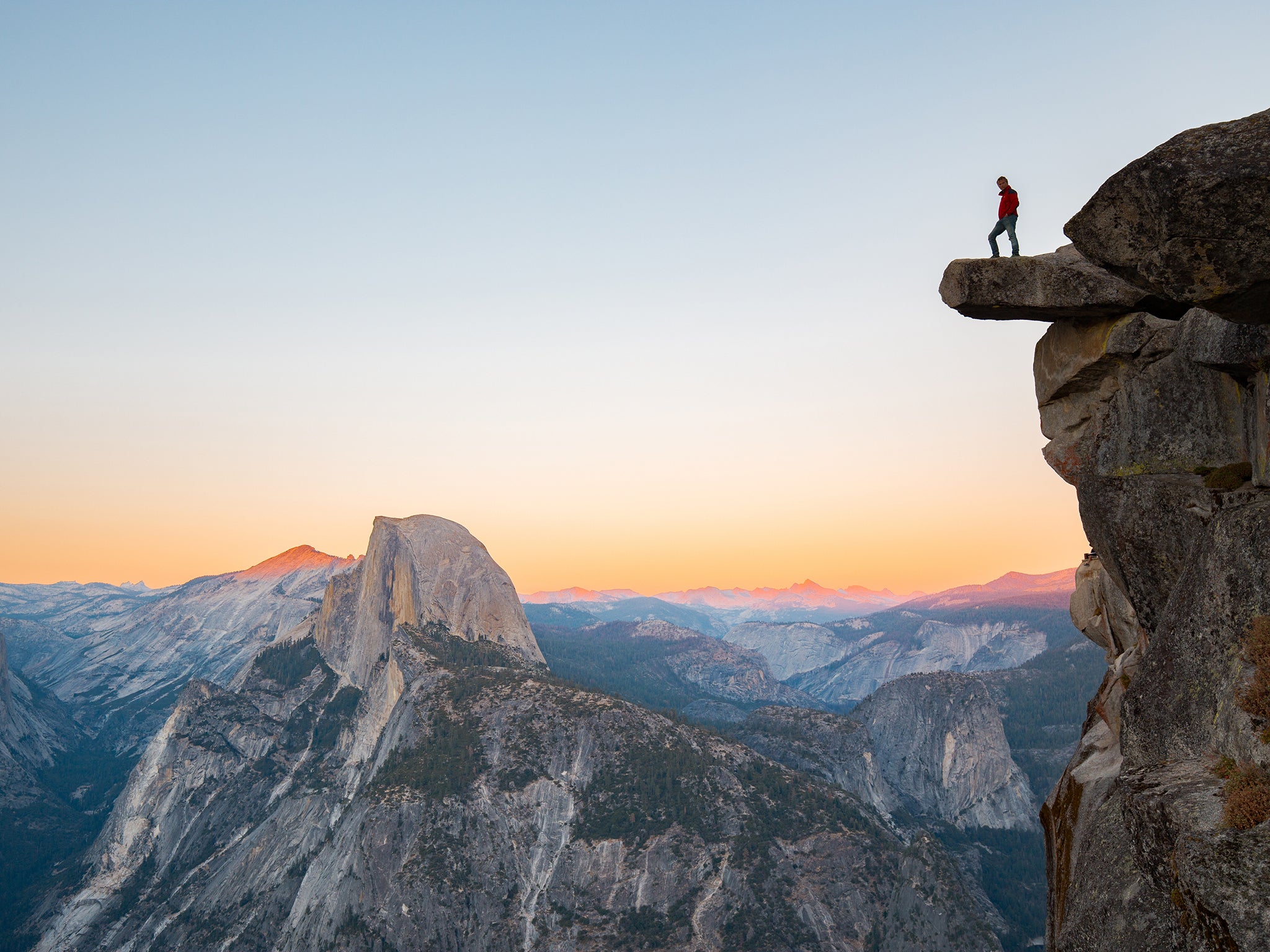Hiking tips: How to get into walking to bring out your inner explorer
Hiking around the UK doesn’t have to be daunting. Sian Lewis asks the experts how to get started

Grab your walking boots! Hiking offers amazing physical and mental benefits as well as the chance to get outside in the fresh air, and it’s easier than you think to take the first step.
Walking is one of the simplest ways you can exercise, and opens up miles of country glades, coast paths and mountain trails for exploring.
It’s also a low-impact way to get fit and healthy, and walking is mindful and mood-lifting to boot. And once you own a decent pair of hiking boots, it’s also totally free.
From picking the right footwear to route planning and finding like-minded walkers to ramble with, get into hiking with our step-by-step guide, complete with expert tips from a walking group leader.
Physical and mental health benefits
Regular walking is a brilliant way to get a cardio and muscle workout without the extra strain and impact of running. Hiking also lowers the risk of heart disease, improves blood pressure and helps to control your weight. If you’re beginning to find your hiking fitness and clock up a fair few miles, make sure you pace yourself. You should be able to hold a conversation as you walk – if you can’t, you’re going too fast.
Endurance and stamina are best improved by building up the distance you walk over time. To improve your stamina when off the trail, try exercises that work your core and back, to ensure a strong posture. Running and swimming will also build up the aerobic fitness you’ll need for more challenging hikes.
Walking is just as beneficial for your mental health as your physical fitness. Studies show that getting active in the great outdoors can calm anxiety, reduce stress and lower the risk of depression, and the NHS even recommends walking for your mental wellbeing.
Charlotte Drew runs Bristol Girl Hikers, a women’s walking group that welcomes hiking beginners. She says “hiking is about putting things in perspective. If I’m having a bad week at work, a weekend hike in the mountains will remind me that there’s far more to life than the daily grind – you can’t possibly think about deadlines or targets when you’re huffing and puffing up a mountain or walking behind a thundering waterfall. Walking in nature has a way of bringing you into the present moment.”
She adds “The benefits of hiking – physical, mindful and social – are worth the push out of your comfort zone.”
Find the confidence to get started
Drew advises that those new to walking should "start off by hiking somewhere familiar, on a short, simple-to-follow route. Tell someone where you are going and plan your route before you set off. If you are concerned about going it alone, is there a walk you often do with other people that you know inside out?”

Join a walking group
The Ramblers is the largest walkers’ rights organisation in Great Britain, and a great place to find like-minded people to hike with. There are local ramblers groups all over the country, and the organisation have an interactive map online where you can search for local groups based on age group or whether they are dog or family friendly.
You can also use Facebook to find fellow walkers or, Drew says, if they don't exist already then use social media to make your own group.
Navigation and route planning
It’s sensible to be aware of your navigational ability before a walk, and to plan routes carefully before stepping out your front door. That said, there are plenty of beginner-friendly ways to get into walking which will build your confidence in navigation and your hiking ability. Try downloading an easy online step-by-step walk route and taking it, along with a map, to an area you already know to practice following directions.
Or try walking along a signed coast path – as long as you keep the sea on the right side of you, you’ll know exactly where you are.
Never rely on your phone, or anything else electronic, for navigation – technology has a tendency to go wrong just when you need it the most. Always carry a map with you. In Britain, ordnance survey (or OS) maps are the most commonly carried by walkers.
Work out how long your hike will take
To work out how long it’ll take you to walk a certain distance, allow one hour for every three miles you measure on a map (a twenty minute mile is roughly correct for most adults) and add an extra 30 minutes for every 1,000 feet of elevation you climb.
Choose the right boots
Before you head out on a hike, you need the right boots on your feet to take on the trail in comfort. Hiking boots are usually made of either leather or fabric – leather is naturally waterproof and warm but can be heavier than fabric boots, and may need breaking in. Fabric boots, on the other hand, are lighter and more comfortable, but tend to be less durable and warm. Whichever you choose, look for boots that are fully waterproof, ideally using a waterproofing technology such as Gore-Tex, and with tough, grippy rubber soles.
When trying boots on, check there’s no rubbing or tightness anywhere, and that you have plenty of wiggle room for your toes.
What to pack on a hike
You’ve got the right boots – so what else do you need in your backpack? Make sure you pack a waterproof jacket, waterproof trousers, sunscreen, sun hat and sunglasses in your rucksack (which should also have a waterproof rain cover) in case the weather suddenly changes, plus extra warm layers.
Carry, and regularly sip on, plenty of water, and pack snacks if you’re out for more than an hour or two. A physical map in a waterproof case is a must-pack, and a small first aid kit is a sensible addition to your kit too.
Charlotte has an extra hiking essential: “Aside from all the important things like water, maps and snacks, I always have my camera in my pocket. I love to take pictures and be able to relive a beautiful hike at a later date.”
Sian Lewis (@sianannalewis) is an award-winning outdoors journalist and editor of The Girl Outdoors, thegirloutdoors.com, Charlotte Drew (@charlotte_hikes) runs Bristol Girl Hikers walking group.
In association with Voltarol. For more information about our products or to report an adverse event with one of our products please contact 0800 783 8881.
